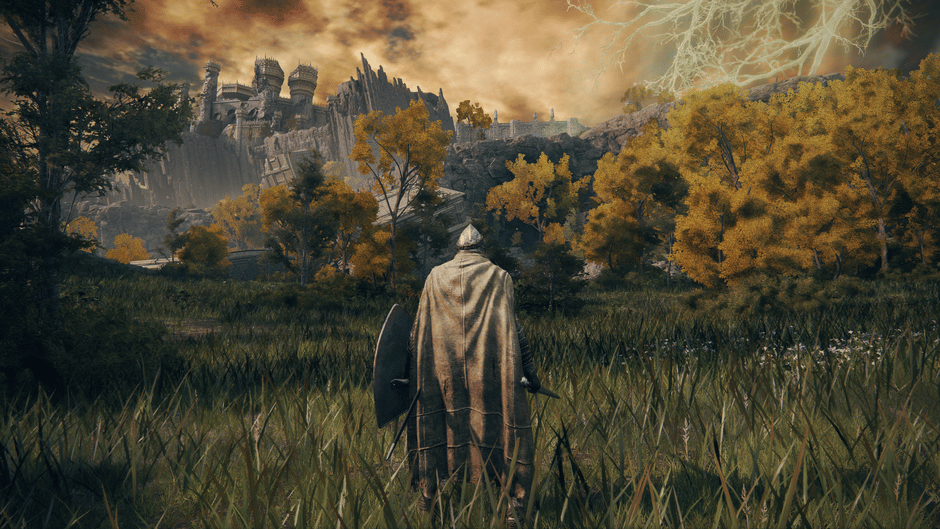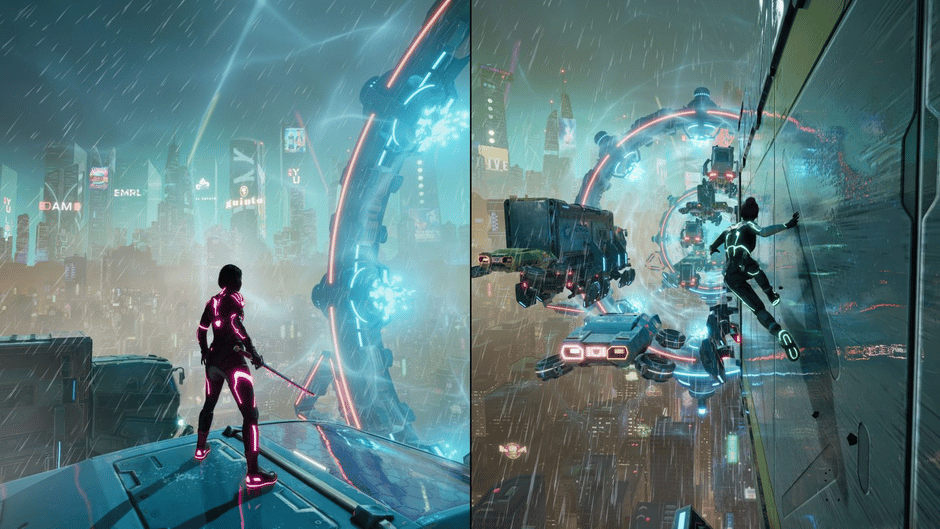Elden Ring vs. The Legend of Zelda: Tears of the Kingdom: Which Open-World Wins?
In the realm of open-world gaming, two titans have emerged in recent years, captivating players with their immersive environments and innovative gameplay: FromSoftware's Elden Ring and Nintendo's The Legend of Zelda: Tears of the Kingdom. Which is better?

In the realm of open-world gaming, two titans have emerged in recent years, captivating players with their immersive environments and innovative gameplay: FromSoftware's Elden Ring and Nintendo's The Legend of Zelda: Tears of the Kingdom. Both games have set new standards for the genre, but they approach the open-world concept in distinctly different ways. This comprehensive comparison will delve into various aspects of these games to determine which open-world experience reigns supreme.
World Design and Atmosphere
Elden Ring: A Foreboding Realm of Mystery
Elden Ring's world, The Lands Between, is a masterclass in atmospheric design. FromSoftware has crafted a landscape that is both beautiful and terrifying, filled with decaying grandeur and otherworldly horrors. The game's art direction is unparalleled, creating a sense of awe and dread that permeates every corner of its vast map.
The Lands Between feels like a world on the brink of collapse, with each area telling its own story of fallen kingdoms and cosmic struggles. From the golden-leafed Erdtree that dominates the skyline to the eerie catacombs hidden beneath the surface, every location is meticulously designed to evoke a sense of history and hidden lore.
Tears of the Kingdom: A Vibrant Playground of Possibilities
In contrast, Tears of the Kingdom presents a reimagined Hyrule that is bursting with life and color. The game builds upon the foundation laid by Breath of the Wild, adding floating islands and underground caverns that expand the verticality of its world. This creates a multi-layered environment that encourages exploration in all directions.Nintendo's approach focuses on creating a more inviting and whimsical atmosphere. While danger lurks in many corners, the overall tone is one of adventure and discovery rather than oppressive dread. The world feels like a vast playground, inviting players to experiment and interact with their surroundings in creative ways.
Gameplay Mechanics and Combat
Elden Ring: Precision and Challenge
Elden Ring's gameplay is rooted in the challenging combat that FromSoftware is known for. The combat system is deep and rewarding, requiring players to master timing, positioning, and resource management. Each encounter, from lowly enemies to towering bosses, can be deadly if approached carelessly.The game offers a wide variety of weapons, spells, and playstyles, allowing players to tailor their approach to combat. The addition of mounted combat and stealth elements adds new dimensions to the traditional Souls-like formula, creating a more diverse and dynamic fighting experience.
Tears of the Kingdom: Creativity and Physics
Tears of the Kingdom takes a different approach to gameplay, emphasizing creativity and physics-based problem-solving. The game's Ultrahand ability allows players to manipulate objects in the environment, creating unique solutions to puzzles and combat scenarios alike.While the combat may not be as technically demanding as Elden Ring's, it offers a level of freedom and improvisation that is unmatched. Players can craft bizarre contraptions, use the environment to their advantage, or approach situations in completely unexpected ways. This sandbox-style gameplay encourages experimentation and rewards out-of-the-box thinking.
Exploration and Discovery
Elden Ring: Rewarding the Brave
Exploration in Elden Ring is a tense and rewarding experience. The game's minimal guidance and challenging enemies make every venture into unknown territory a risk, but one that often comes with great rewards. Hidden dungeons, powerful weapons, and fragments of lore await those brave enough to seek them out.
The non-linear nature of the game allows players to tackle areas in almost any order, with the difficulty often serving as a soft gate. This creates a sense of freedom and accomplishment as players overcome challenges and unlock new areas of the map.
Tears of the Kingdom: Unbridled Freedom
Tears of the Kingdom takes exploration to new heights, quite literally. The addition of sky islands and the ability to create flying machines gives players unprecedented freedom of movement. The game encourages curiosity, with secrets and puzzles hidden in every nook and cranny of its expansive world.
The Zonai technology scattered throughout the world serves as both a puzzle-solving tool and a means of traversal, allowing players to interact with the environment in innovative ways. This creates a seamless blend of exploration and gameplay mechanics, where the journey itself is often as rewarding as the destination.
Narrative and Storytelling
Elden Ring: Cryptic Lore and Player Interpretation
Elden Ring's narrative is typical of FromSoftware's style: cryptic, fragmented, and open to interpretation. The story is told through item descriptions, environmental details, and sparse NPC interactions. This approach creates a sense of mystery and encourages players to piece together the lore themselves.
While this style of storytelling may not appeal to everyone, it creates a deeply engaging experience for those willing to dive into its complexities. The game's world feels rich with history and hidden meanings, rewarding attentive players with a deep and nuanced narrative.
Tears of the Kingdom: A Classic Hero's Journey
Tears of the Kingdom offers a more traditional narrative structure, building upon the established lore of the Zelda series. The story is more directly presented, with cutscenes and character interactions driving the plot forward. This approach makes the narrative more accessible and allows for more emotional connection to the characters and their struggles.
The game balances its main storyline with numerous side quests and character arcs, creating a rich tapestry of tales within its world. While less mysterious than Elden Ring's approach, it offers a satisfying and cohesive narrative experience.
Visual and Audio Design
Elden Ring: Gothic Grandeur
Visually, Elden Ring is a feast for the eyes, blending Gothic architecture with cosmic horror elements. The game's art direction creates a unique and unforgettable aesthetic that sets it apart from other fantasy titles. From the intricate designs of its armor sets to the grotesque beauty of its bosses, every visual element is crafted with meticulous attention to detail.The audio design complements the visuals perfectly, with a haunting soundtrack that enhances the game's atmosphere. The sound effects, from the clash of weapons to the roars of monstrous enemies, create an immersive audio landscape that pulls players deeper into its world.
Tears of the Kingdom: Vibrant Artistry
Tears of the Kingdom showcases Nintendo's mastery of creating visually appealing worlds. The game's art style is a perfect blend of cartoon-like charm and breathtaking vistas. The diverse environments, from lush forests to barren deserts, are rendered with vibrant colors and intricate details that bring Hyrule to life.
The game's audio design is equally impressive, with a dynamic soundtrack that adapts to the player's actions and location. The familiar Zelda themes are reimagined and interwoven with new compositions, creating a soundscape that is both nostalgic and fresh.
Conclusion: Two Sides of the Same Coin
In the end, declaring a definitive winner between Elden Ring and The Legend of Zelda: Tears of the Kingdom is a challenging task. Both games excel in creating immersive open worlds that push the boundaries of what's possible in gaming. They approach the concept from different angles, each offering unique strengths that cater to different player preferences.
Elden Ring stands out for its challenging gameplay, mysterious lore, and atmospheric world design. It's a game that demands much from its players but rewards them with a sense of accomplishment and discovery that few other titles can match.
Tears of the Kingdom, on the other hand, shines in its emphasis on creativity, freedom of exploration, and accessibility. It creates a world that feels like a true playground, inviting players to experiment and discover at their own pace.
Ultimately, the choice between these two masterpieces comes down to personal preference. Do you crave a challenging, atmospheric experience that will test your skills and patience? Elden Ring might be your ideal choice.
Or do you prefer a more lighthearted adventure that encourages creativity and offers a more traditional narrative? Then Tears of the Kingdom could be the perfect fit.Regardless of which game you choose, both Elden Ring and The Legend of Zelda: Tears of the Kingdom represent the pinnacle of open-world design in their own unique ways. They have set new standards for the genre and will undoubtedly influence game design for years to come. In the grand landscape of gaming, we are fortunate to have two such exceptional titles that push the boundaries of what open-world games can achieve.





